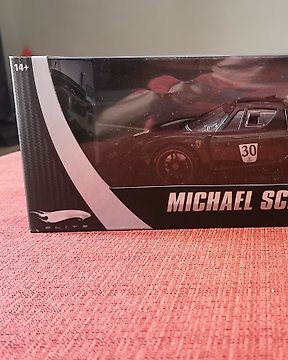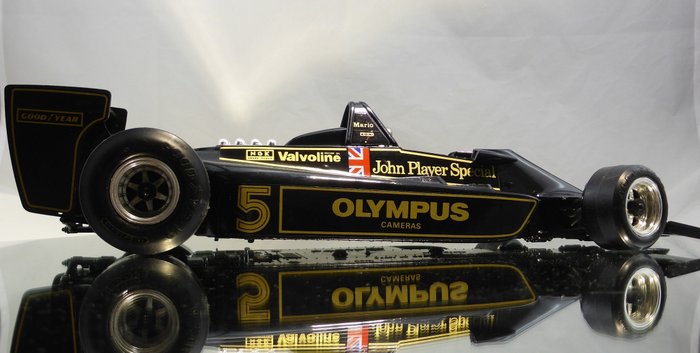
Hot Wheels - 1:18 - Ferrari FXX # 30 - .
Nr. 44614259

Nr. 44614259

Lotus 79 John Player special - 1978 Mario Andretti -
BBURAGO - 1/14.
In die-cast metal, in very good condition as shown in the photos.
It’s the same car driven by Ronnie Peterson.
The Lotus 79 is a Formula One single-seater that raced in the 1978 World Championship. With the drivers Mario Andretti and Ronnie Peterson, it won 6 Grand Prix that allowed the Italo-American to become World Champion and the team to win the constructors’ title. Nicknamed “Black Beauty” for its proportionate lines and the black livery of the sponsor John Player Special, it is considered by some to be the most technically important single-seater in F1 history.
The Lotus 79 was a truly revolutionary car for its time. Designed by Martin Ogilvie and Peter Wright, it brought to the maximum completion the research on aerodynamics carried out in all secrecy by Lotus in those years and partly already expressed in the previous model, the Lotus 78. A new term was then used to define these cars: ground effect.
The idea behind the project was the exploitation of the Venturi effect, a phenomenon discovered by the Italian physicist of the same name and known since the end of the 18th century. Lotus engineers shaped the underbody of the car (in particular the side boxes that housed the radiators) in order to obtain an inverted wing profile which, together with the road profile and the presence of the side skirts, constituted a convergent-divergent duct, or a Venturi duct. The air conveyed into this duct was accelerated due to the narrowing of the main section, causing a great lowering of the static pressure, which resulted in an increased downforce. Contrary to the wing appendages, the downforce thus generated caused only a slight increase in aerodynamic drag, making the car much faster both in corners and in straights.
At its debut, the Lotus 79 immediately proved to be faster than all the competitors and only withdrawals due to mechanical failures prevented it from winning all the races on the calendar. The car set the standard, even though all the other Formula 1 teams took at least a year to find out the advantage of the Lotus 79s.
Gradually, starting from 1979, all F1 cars adopted the ground effect, with side skirts and profiled bottom, until in 1983 the Federation intervened to change the regulations and limit the use of these aerodynamic devices which had caused a sudden and generalised performance increase, making the cars very dangerous.
The wins
Zo koop je op Catawiki
1. Ontdek iets bijzonders
2. Plaats het hoogste bod
3. Veilig betalen